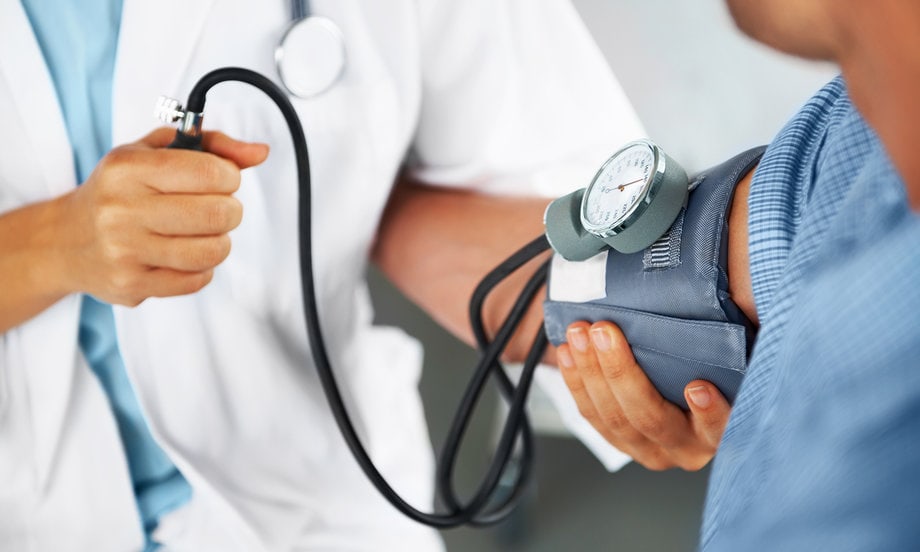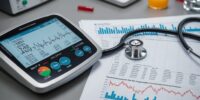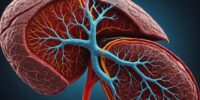How To Identify And Manage Hypertensive Urgency?

Hypertensive urgency, a condition characterized by severely elevated blood pressure levels, poses a significant risk to individuals and requires prompt identification and management to prevent associated complications.
This article aims to provide a comprehensive overview of how to identify and manage hypertensive urgency. Firstly, understanding the concept of hypertensive urgency is crucial, as it involves a sudden increase in blood pressure without acute end-organ damage.
Measuring blood pressure accurately is essential to determine if hypertensive urgency is present. Seeking medical attention promptly is advised, as healthcare professionals can assess the severity of the condition and initiate appropriate interventions.
Lifestyle modifications, such as dietary changes and regular physical activity, play a vital role in managing hypertensive urgency. Medication management may also be necessary to control blood pressure effectively.
Monitoring and follow-up are essential to evaluate the effectiveness of interventions and adjust treatment accordingly. Preventive measures and providing support and education to individuals are also significant components of managing hypertensive urgency.
Key Takeaways
- Hypertensive urgency can be managed through relaxation techniques such as deep breathing exercises, progressive muscle relaxation, and guided imagery.
- Medication management is important in treating hypertensive urgency, including adherence to medications, addressing challenges in adherence, and educating patients about potential side effects.
- Regular monitoring and communication are vital in managing hypertensive urgency, including monitoring techniques, assessing medication effectiveness and patient progress, and maintaining close follow-up with healthcare professionals.
- Preventive measures for hypertensive crises include making lifestyle changes such as following the DASH diet, reducing sodium intake, engaging in regular physical activity, avoiding tobacco and limiting alcohol consumption, and managing stress through relaxation techniques.
Understanding Hypertensive Urgency
Hypertensive urgency is a medical condition characterized by severely elevated blood pressure levels that require immediate attention and management. Understanding the symptoms of hypertensive urgency is crucial for early identification and prompt intervention.
Common symptoms include severe headache, shortness of breath, nosebleeds, and chest pain. However, it is important to note that hypertensive urgency is often asymptomatic, making it necessary to routinely monitor blood pressure levels.
Identifying the risk factors associated with hypertensive urgency is vital for early intervention and prevention. Risk factors include obesity, smoking, sedentary lifestyle, family history of hypertension, and certain medical conditions such as diabetes and kidney disease.
By recognizing these risk factors and promptly addressing elevated blood pressure levels, healthcare providers can effectively manage hypertensive urgency and prevent potentially life-threatening complications.
Measuring Blood Pressure
To accurately assess the severity of a hypertensive episode, it is crucial to measure blood pressure using a reliable and validated method. Blood pressure measurement serves as a vital tool in diagnosing hypertension and determining appropriate management strategies. Here are four key aspects to consider when measuring blood pressure:
- Use an appropriately sized cuff: An ill-fitting cuff can lead to inaccurate readings. The cuff’s bladder should encircle at least 80% of the arm’s circumference to ensure reliable measurements.
- Proper technique: The patient should be seated comfortably with their arm supported at heart level. The cuff should be placed snugly around the upper arm, and multiple measurements should be taken to obtain an average reading.
- Avoiding false readings: Factors like caffeine intake, smoking, recent exercise, and emotional stress can temporarily elevate blood pressure. Patients should be advised to avoid these factors before measurement.
- Validated devices: Blood pressure monitors used in clinical settings should be validated and calibrated regularly to ensure accuracy.
By adhering to these guidelines, healthcare professionals can obtain accurate blood pressure measurements for effective hypertension diagnosis and management.
Seeking Medical Attention
Seeking medical attention is crucial in cases of high blood pressure to ensure proper evaluation and treatment by healthcare professionals. Hypertensive urgency is a condition characterized by severely elevated blood pressure levels, usually above 180/110 mmHg, without acute target organ damage. While hypertensive urgency does not require immediate hospitalization, it necessitates prompt medical evaluation to prevent potential complications. Patients experiencing hypertensive urgency should seek help from healthcare providers who can assess their condition and determine the appropriate management strategy. During the evaluation, healthcare professionals may assess the patient’s symptoms, perform a physical examination, and order diagnostic tests to determine the underlying cause of the high blood pressure. They may also recommend lifestyle modifications, prescribe antihypertensive medications, or refer the patient to a specialist depending on the severity of the condition. In emergency situations, such as severe headache, chest pain, or shortness of breath, immediate medical attention should be sought to rule out acute organ damage and manage the condition effectively.
| Symptom | Possible Cause | Management |
|---|---|---|
| Severe headache | Hypertensive encephalopathy | Monitor blood pressure, administer antihypertensive medication |
| Chest pain | Hypertensive crisis | Administer antihypertensive medication, consider hospitalization if necessary |
| Shortness of breath | Pulmonary edema | Administer oxygen, diuretics, and antihypertensive medication |
| Neurologic symptoms | Hypertensive encephalopathy | Monitor blood pressure, administer antihypertensive medication |
Table: Symptoms, possible causes, and management strategies for hypertensive urgency.
Lifestyle Modifications
Lifestyle modifications play a crucial role in managing and preventing hypertensive urgency.
The first key point is the importance of a healthy diet, which includes reducing sodium intake, increasing consumption of fruits and vegetables, and adopting the DASH (Dietary Approaches to Stop Hypertension) eating plan.
Regular exercise and physical activity are also essential, as they help lower blood pressure and improve overall cardiovascular health.
Lastly, stress management techniques such as relaxation exercises, meditation, and deep breathing can be effective in reducing stress levels and maintaining blood pressure within a healthy range.
Importance of a Healthy Diet
A well-balanced and nutrient-rich diet plays a crucial role in maintaining optimal blood pressure levels and reducing the risk of hypertensive urgency. Healthy eating and balanced nutrition are essential components of managing hypertension. A diet that is low in sodium, saturated fats, and cholesterol and high in fruits, vegetables, whole grains, lean proteins, and low-fat dairy products can help lower blood pressure levels. Consuming foods rich in potassium, such as bananas, avocados, and leafy green vegetables, can also be beneficial. Additionally, reducing the intake of processed and packaged foods, which are often high in sodium and unhealthy fats, is important. Regularly monitoring and controlling portion sizes can further support a healthy diet. Incorporating these dietary changes can contribute to better blood pressure management and overall cardiovascular health.
| Food Category | Recommendations | Examples |
|---|---|---|
| Fruits and Vegetables | 4-5 servings per day | Apples, broccoli, carrots |
| Whole Grains | 6-8 servings per day | Brown rice, quinoa, oats |
| Lean Proteins | 2-3 servings per day | Skinless chicken breast, fish, tofu |
| Low-fat Dairy Products | 2-3 servings per day | Yogurt, skim milk, cottage cheese |
| Healthy Fats | Limited intake | Avocado, nuts, olive oil |
Regular Exercise and Physical Activity
Engaging in regular physical activity and exercise is crucial for maintaining healthy blood pressure levels and promoting overall cardiovascular well-being. Exercise benefits individuals with hypertensive urgency by reducing blood pressure levels, improving heart function, and enhancing blood flow.
Regular physical activity stimulates the release of endorphins, which helps reduce stress and anxiety, contributing to better blood pressure control. It also aids in weight management, as excess body weight is a risk factor for hypertension.
To maximize exercise benefits, individuals should follow physical activity guidelines, which recommend at least 150 minutes of moderate-intensity aerobic activity or 75 minutes of vigorous-intensity aerobic activity per week, along with muscle-strengthening activities on two or more days.
By incorporating regular exercise and physical activity into their routine, individuals can effectively manage hypertensive urgency and improve their overall cardiovascular health.
Stress Management Techniques
To effectively address the impact of stress on blood pressure levels, it is important to implement various stress management techniques. Stress reduction plays a crucial role in managing hypertensive urgency.
Relaxation techniques, such as deep breathing exercises, progressive muscle relaxation, and guided imagery, have been shown to effectively lower blood pressure. Regular practice of these techniques promotes a state of calmness and relaxation, leading to reduced stress levels.
Deep breathing exercises involve taking slow, deep breaths, holding them for a few seconds, and then exhaling slowly. Progressive muscle relaxation involves tensing and then relaxing different muscle groups in the body. Guided imagery uses visualization techniques to create a mental image that promotes relaxation and reduces stress.
Incorporating these stress management techniques into daily routine can help individuals effectively manage hypertensive urgency.
Medication Management
Medication management plays a crucial role in identifying and effectively managing hypertensive urgency. Adherence to prescribed medications is essential for controlling blood pressure levels and preventing complications associated with hypertensive urgency.
Patients must follow their medication regimen consistently to achieve optimal results. However, medication adherence can be challenging due to various factors such as forgetfulness, cost, and potential side effects. It is important for healthcare providers to educate patients about the importance of medication adherence and address any concerns or barriers they may have.
Additionally, patients should be informed about the potential side effects of their medications, such as dizziness, fatigue, or gastrointestinal disturbances, to ensure they can recognize and report any adverse reactions.
Regular monitoring and communication between healthcare providers and patients are vital to assess the effectiveness of medications and address any issues that may arise.
Monitoring and Follow-Up
In the context of medication management for hypertensive urgency, it is imperative to consider the importance of monitoring and follow-up.
Monitoring techniques play a crucial role in assessing the effectiveness of the prescribed medications and evaluating the patient’s progress. Regular blood pressure measurements are essential to determine if the treatment is achieving the desired control. Additionally, monitoring other related factors such as heart rate, weight, and kidney function can provide valuable insights into the patient’s overall health status and response to treatment.
Furthermore, long-term management involves consistent monitoring to identify any potential complications or adverse effects of the medications. Close follow-up with healthcare professionals enables adjustments in treatment plans, ensuring optimal control of blood pressure and reducing the risk of hypertensive emergencies.
By implementing effective monitoring techniques and maintaining regular follow-up appointments, healthcare providers can provide comprehensive care for patients with hypertensive urgency.
Preventive Measures
Preventive measures are essential in mitigating the risk of hypertensive crises and ensuring long-term control of blood pressure.
Lifestyle changes play a crucial role in preventing hypertensive urgency. Adopting a healthy diet, such as the DASH (Dietary Approaches to Stop Hypertension) diet, which emphasizes fruits, vegetables, whole grains, and low-fat dairy products, can help lower blood pressure.
Reducing sodium intake is also important, as excessive salt consumption can contribute to hypertension. Engaging in regular physical activity, such as aerobic exercises, for at least 150 minutes per week can help maintain a healthy weight and lower blood pressure.
Avoiding tobacco and limiting alcohol consumption are additional preventive measures. Lastly, managing stress through relaxation techniques like meditation or yoga can also contribute to maintaining optimal blood pressure levels.
By implementing these preventive measures, individuals can decrease the likelihood of hypertensive urgency and promote long-term blood pressure control.
Support and Education
Support and education play crucial roles in managing hypertension.
Joining support groups or programs can provide individuals with a sense of community and understanding, as well as valuable information and resources.
Educating oneself and loved ones about hypertension can help promote awareness, adherence to treatment plans, and healthy lifestyle choices, ultimately leading to better disease management and overall well-being.
Joining Support Groups or Programs
Participating in support groups or programs can provide individuals with a valuable network of resources and guidance for effectively managing hypertensive urgency. Joining support groups offers a sense of belonging and understanding among individuals facing similar challenges. Online communities, such as forums or social media groups, provide a convenient platform for sharing experiences, seeking advice, and obtaining emotional support.
Additionally, support groups and programs offer educational materials and workshops that increase knowledge about hypertensive urgency and its management. These resources may include information on lifestyle modifications, medication adherence, stress reduction techniques, and regular monitoring of blood pressure.
By joining support groups or programs, individuals can gain access to a wealth of information and support, ultimately leading to better management of hypertensive urgency.
Educating Yourself and Loved Ones about Hypertension
Acquiring knowledge about hypertension and sharing it with loved ones is crucial for fostering a sense of empowerment and promoting proactive healthcare decisions.
Educating oneself about hypertension involves understanding its causes, risk factors, symptoms, and potential complications. By staying informed, individuals can make informed choices regarding lifestyle modifications, medication adherence, and regular monitoring of blood pressure levels.
Additionally, sharing this knowledge with loved ones can help create a supportive environment that encourages healthy behaviors and prompt recognition of hypertensive urgency. Educating others about hypertension also empowers them to recognize the signs and symptoms, potentially allowing for early intervention and prevention of complications.
Overall, educating oneself and loved ones about hypertension plays a vital role in managing the condition effectively and reducing the burden it imposes on individuals and society.
Frequently Asked Questions
Can hypertensive urgency be managed solely through lifestyle modifications without the need for medication?
Hypertensive urgency can be managed through lifestyle modifications alone in some cases, without the need for medication. Lifestyle modifications such as dietary changes, regular exercise, weight loss, and stress reduction can effectively lower blood pressure levels.
How often should blood pressure be monitored after experiencing hypertensive urgency?
Blood pressure should be monitored regularly after experiencing hypertensive urgency to assess the effectiveness of treatment and prevent long-term complications. The monitoring frequency may vary depending on individual factors such as comorbidities and response to treatment.
Can stress or anxiety contribute to hypertensive urgency?
Stress and anxiety can contribute to hypertensive urgency. Stress management and relaxation techniques, such as deep breathing exercises and meditation, may help in reducing blood pressure and preventing hypertensive urgency.
Are there any alternative treatments or therapies that can help manage hypertensive urgency?
Alternative therapies and natural remedies can be used to manage hypertensive urgency. These treatments, such as acupuncture, meditation, and herbal supplements, may help lower blood pressure levels and reduce the risk of complications associated with this condition.
Is it possible to prevent hypertensive urgency through dietary changes alone?
Preventing hypertension through dietary interventions alone is possible. Implementing a balanced diet that is low in sodium, rich in fruits and vegetables, and limited in saturated fats can help reduce the risk of developing hypertensive urgency.









